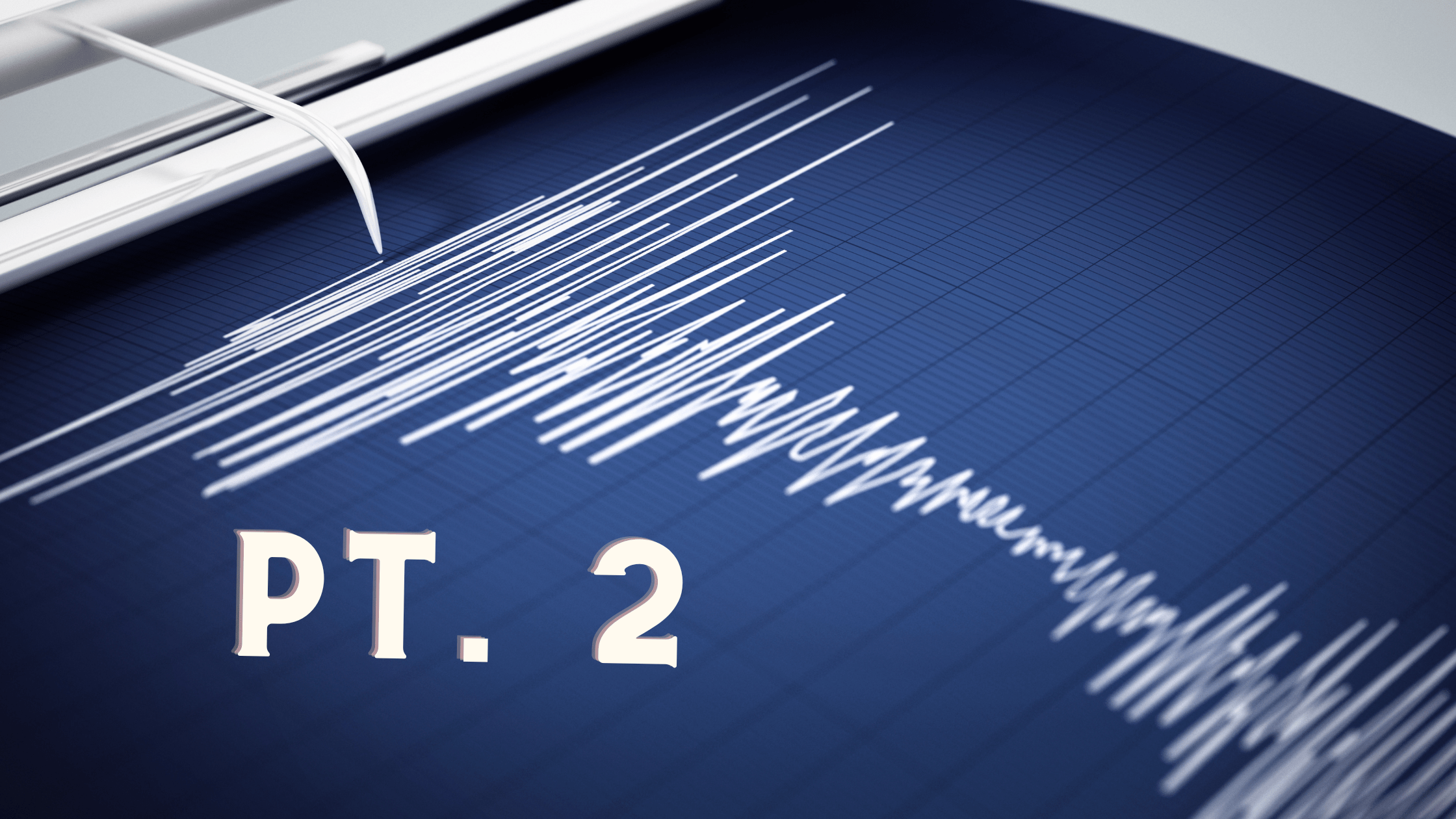Describing earthquakes, and how they happen, without the use of illustrations is quite challenging. I must ask you to engage your imagination when reading further.
An earthquake is the result of abrupt movement along a break in the earth’s crust. Such a definition assumes that one possesses a basic understanding of what the earth’s crust is, as well as why and how it moves. People studying this phenomenon are referred to as seismologists.
Plate Tectonics
The earth’s crust can be visualized as several large islands adrift on a very thick, semi-solid sphere: like pieces of a puzzle moving around on a ball of wax; or like the patchwork panels on a soccer ball. The crust of the earth is actually the outermost brittle layer of the uppermost portion of the earth’s mantle, known by geologists as the lithosphere. The individual pieces of the lithosphere are referred to as tectonic plates. Movement of these plates is powered by the circulation of semi-solid, molten material beneath the crust, heated from intense pressure and radioactive decay. Heated materials rise from beneath the earth’s crust, replaced by cooler, denser materials. An analogy by which this process may be visualized is the circulation of wax when heated in a transparent vat. Wax that has been expanded through heat will rise, while wax further from the heat source is cooler and denser, causing it to sink in relation to wax with lower density and higher temperatures – the hotter wax. In this way, heat supplies the energy necessary to move pieces of the earth’s crust. The major plates comprising the lithosphere include:
• African
• Antarctic
• Arabian
• Australian
• Caribbean
• Cocos
• Eurasian
• Indian
• Juan de Fuca
• Nazca
• North American
• Pacific
• Philippine
• Scotia
• Somali
• South American
In general, the composition of the earth’s crust can be discussed in terms of two types of rock: heavy iron-magnesium rock forming the oceanic crust and lighter aluminum-silicate rock comprising the continental crust. Referring back to the image of a soccer ball as representative of the earth’s crust, the black panels would represent the oceanic crust and the white panels the continental crust. The oceanic crust is denser and thinner than the continental crust that dominates dry land. The thickness of the oceanic crust averages about 4 miles, whereas the continental crust averages about 20 miles. Because the continental crust is only 80% as dense as the oceanic crust, continental plates override oceanic plates when collisions occur between these two distinct rock types. Thus, the oceanic crust is thrust beneath the continental crust in a process referred to as subduction. One notable exception to this general rule can be observed in the Olympic Mountains in Washington State. A hitch in the oceanic plate has produced buckling and folding of the crust during subduction so severe that a mountain range reaching an elevation in excess of 8,000 feet has formed. Places along plate boundaries where subduction occurs are called subduction zones, and can be identified by the volcanic activity that takes place within a hundred miles or so from where the plates collide.
The process of subduction contributes to the recycling of rock. Sedimentary, metamorphic, and igneous rock is thrust below the surface of the earth and melted. The magma later resurfaces as extrusive molten lava or cools beneath the surface of the earth to form intrusive solid rock. The recycling period for oceanic crust is much quicker, as it usually is forced into the subduction zone by the older, overriding continental crust. Consequently, there is no known oceanic crust older than about 200 million years, whereas continental crust exposed in places such as Death Valley is estimated to be over 2 billion years old.
Off the coast of the Pacific Northwest, the small Juan de Fuca plate is being subducted beneath the massive North American plate. Evidence of this subduction includes the eruption of Mount Saint Helens on 18 May 1980. Highly explosive volcanoes, such as the string of volcanoes lining the Pacific Rim, expel a mixture of molten rock, gas, and water vapor generated by the heat and pressure acting on the subducting oceanic plate. As the plate melts, the volatile mixture of material expands and is forced to the surface. Pressure beneath the crust builds, eventually reaching a point where energy is released in one major event: an eruption forming a composite volcano, which is formed by lava flows and accumulation of ejected debris. Volcanoes found in the Hawaiian Islands are less violent, characterized by a steady release of energy in the form of lava flows. Volcanoes of this type are the largest in the world (the island of Hawaii is one such example) and are referred to as shield volcanoes. Typically, shield volcanoes are formed when a plate passes over a mantle plume in the earth’s upper mantle. The Hawaiian Islands are evidence of one such “hotspot” in the lithosphere: not only indicating the presence of a mantle plume, but also depicting the direction in which the plate moving.
Just as some pieces of the earth’s crust collide, others are drifting apart. Areas where the earth’s crust is diverging are known as spreading centers, where sea floor spreading occurs when two plates move in opposite directions. Spreading centers are associated with rifts in the oceanic crust where molten magma boils to the surface, creating new crust that is forced away from each side of the spreading center – like two conveyer belts headed in opposite directions.
Movement of the earth’s crust, however, is imperceptibly slow. Different plates move at different speeds: none move more than a few inches annually. It is estimated that in 18 million years the land currently occupied by Los Angeles and San Francisco will be adjacent: this the result of the Pacific plate (and Los Angeles) drifting northwest, while the North American plate (and San Francisco) moves southwest. The most accurate technology for measuring movement of the earth’s surface is interferometry. This procedure involves the use of radar signals emitted from a satellite positioned about 500 miles overhead to create a landscape map. Maps of today’s landscape are compared against prior maps to determine where and how much the earth has moved.
Because plates move at different speeds, they drift apart and collide, forming a variety of geological landscapes. Moreover, plate movements are not limited to sliding past or running into one another. Plates may also rise and sink in relation to each other. One such movement is termed isostasy. Isostasy describes the movement that occurs when the crust becomes lighter or heavier as the result of material being removed from or added to the surface of the earth. Erosion, transportation, and deposition of large quantities of sediment over a long period of time by a very strong force – as in the case of the Mississippi River – displaces a tremendous load from one part of the earth’s crust to another. As the thick surface of continental crust erodes away – and becomes lighter as a result – that part of the earth’s crust ‘floats’ toward the surface. The earth’s crust becomes heavier and ‘sinks’ where material is deposited. Erosion, transportation, and deposition occurring in the Sierra Nevada Mountain Range contribute to the rise of the Sierra Nevada and the sinking of the adjacent Owens Valley.
Part 2 of this topic will post on 31 January 2014.

